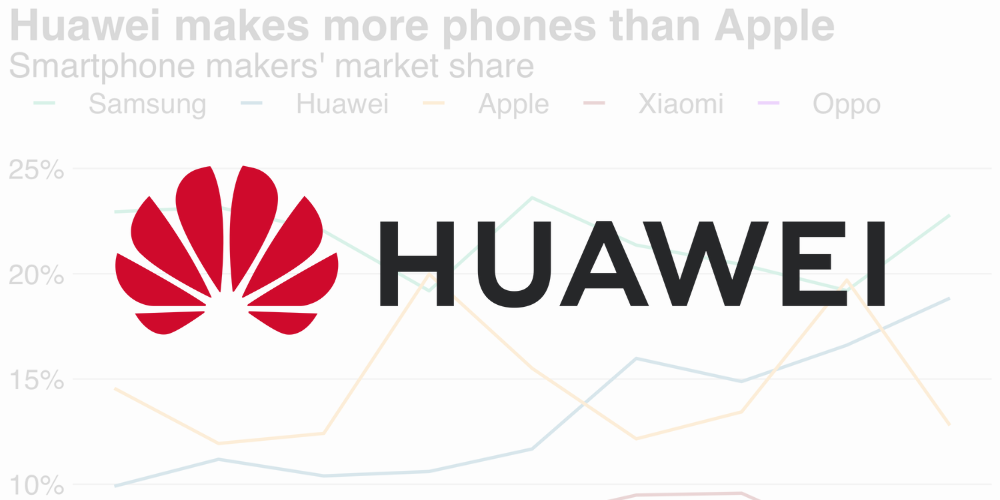
In the ever-evolving landscape of technology, Huawei is fast emerging as a potent rival to industry titans NVIDIA and Apple. Recent developments indicate that Huawei is steadily ascending, not only matching the capabilities of its counterparts but also fostering China’s journey towards technological self-reliance.
Jensen Huang, NVIDIA’s CEO, recently acknowledged Huawei’s remarkable strides, heralding them as “one of the most technologically advanced companies in the world”. This affirmation came on the heels of iFlytek, a Chinese AI entity, unveiling its Spark AI model for the public, an initiative powered significantly by Huawei’s upgraded GPU capabilities, which are now purported to be on par with NVIDIA’s A100 GPUs, as per iFlytek’s chairman, Liu Qingfeng.
Bridging the Technological Gap with Local Innovations
China’s commitment to advancing generative AI technologies has seen a surge, with government authorities green-lighting products rapidly post security assessments. This zeal for progression has propelled Huawei to fast-track their developments in GPU capabilities, a move that can potentially disrupt NVIDIA’s market monopoly. According to Qingfeng, Huawei aims to rival OpenAI’s ChatGPT and GPT-4 with a general-purpose AI model, a goal that seemed distant without the advancements in China’s hardware competency.
In 2019, Huawei threw the gauntlet with the introduction of the Ascend 910 AI processor, a powerhouse that purportedly surpassed NVIDIA’s A100 in computing prowess. This processor, a pivotal element in Huawei’s Atlas 900 Pod A2 AI training cluster, showcases the company’s capacity to spearhead AI efforts, potentially setting the stage for collaborations with enterprises such as iFlytek.
Leading China’s Charge for Technological Self-Reliance
Huawei’s concerted efforts in nurturing China’s self-sufficiency dream are notable. From venturing assertively into the phone market to developing smaller chips for its phones, Huawei has underscored its ambition to bolster China’s independence from foreign technologies. In collaboration with the Semiconductor Manufacturing International Corp (SMIC), Huawei developed a 7-nanometer processor, the backbone of their latest phone, the Mate 60 Pro, fostering synergy and innovation within China’s borders.
With the recent US sanctions hindering NVIDIA’s chip exports to China, the nation has intensified its resolve to mitigate dependence on US firms. The government’s stance has escalated to restricting the use of Apple iPhones among officials and employees, a move that not only signifies the growing schism between the nations but also casts a shadow on Apple’s revenue prospects in one of its largest markets.
A New Dawn for Huawei: The Ascendant “Apple of China”?
The unveiling of Huawei’s Mate 60 Pro seems to herald a new era, a direct challenge to Apple’s supremacy in the phone market. Though lagging behind Apple’s technological advancements, the new release, coupled with the governmental restrictions, has had a ripple effect on Apple’s stock prices and market valuation, stirring speculations about the changing dynamics in China’s tech marketplace.
In this landscape of evolving allegiances and technological advancements, Huawei stands as a beacon of China’s resilient stride towards self-reliance and innovation. While unseating market leaders NVIDIA and Apple appears to be a distant prospect at the moment, Huawei’s current trajectory hints at a promising future, potentially reshaping China’s technological narrative and fostering a homegrown powerhouse that rivals the best in the business.
Huawei, thus, finds itself at a critical juncture, poised not just to be a mere competitor, but a leader that symbolises China’s technological renaissance, embarking on a journey to possibly become the NVIDIA or Apple of its homeland.
.thumbnailWrapper
width:6.62rem !important;
.alsoReadTitleImage
min-width: 81px !important;
min-height: 81px !important;
.alsoReadMainTitleText
font-size: 14px !important;
line-height: 20px !important;
.alsoReadHeadText
font-size: 24px !important;
line-height: 20px !important;



![Read more about the article [Funding alert] upGrad raises $225M at $2.25B valuation](https://blog.digitalsevaa.com/wp-content/uploads/2022/03/Editorial-17-1647844031285-300x150.png)




![Read more about the article [The Turning Point] How this insurtech is helping insurance agents go digital](https://blog.digitalsevaa.com/wp-content/uploads/2022/05/ImagesFrames51-1651845784290-300x150.png)


